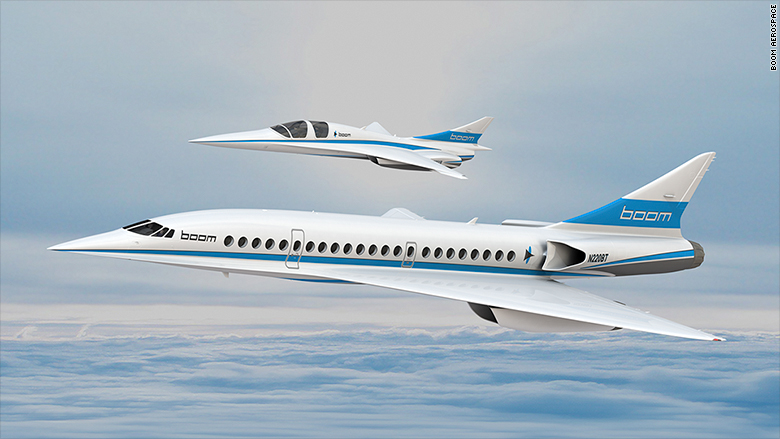
The list of airlines that want to bring back supersonic travel is growing.
Boom Aerospace, an ambitious aerospace start-up, says it has convinced five airlines to buy into its vision for developing a airliner that flies faster than the speed of sound.
Blake Scholl, founder and chief executive of Denver-based Boom, said during a presentation at the Paris Air Show Tuesday that the five carriers have reserved their spots for 76 of Boom's successor to the Concorde. That aircraft was taken out of service in 2003 after 27 years of commercial flights at more than twice the speed of sound.
With a planned speed of 2.2 times the speed of sound or 1,451 mph, the project's lofty goals include sharply cutting flight time: New York to Paris to three and a half hours, San Francisco to Tokyo in less than five and a half hours and Los Angeles to Sydney in just seven hours.
Only one airline interested in Boom, so far, has made itself known. Sir Richard Branson's Virgin Atlantic Airways in 2016 has an option to take the first 10 aircraft the company builds.
Related: Best business class airline lounges around the world
Scholl won't say who the four unidentified "world airlines" are. He promised the individual carriers would identify themselves at a later point to explain how a new generation of supersonic travel fit in their business.
"The airlines that are placing reservations with Boom now are putting real money against them, not small amounts, significant amounts of cash," he said during a presentation at the Paris Air Show.
Two-steps to supersonic flying
Boom is advancing on a two-stage process to revive supersonic commercial air travel. Its first step is to develop a small aircraft called the XB-1 "Baby Boom" to validate many of the technologies for flying at Mach 2.2. Boom will first need to prove these work if it is to go forward with a full-size 45 to 55-seat airliner.
That small two-seat model begins assembly this year and flies late in 2018, Scholl said.
Scholl said that computer simulations have significantly sped up its initial process of finding the the right design of the full-size Boom jet.
"We've tested about a 1,000 design variations...most of them aren't very good," Scholl said. "But we've had a few that are."
Related: Boom lands $33 million to test supersonic aircraft
To date, the company has raised $41 million, which Scholl said will get the XB-1 airborne for the first time.
But Boom is going to need considerably more capital to turn its initial airborne technology trials into a full-fledged commercial aircraft program.
Japan, Russia and China have all offered significant state support as part of the development of new homegrown airliners. The barriers for a new commercial aviation start-up, especially a private one, are enormous.
"I think healthy skepticism is only fair," Scholl said. "This is not a simple project."
